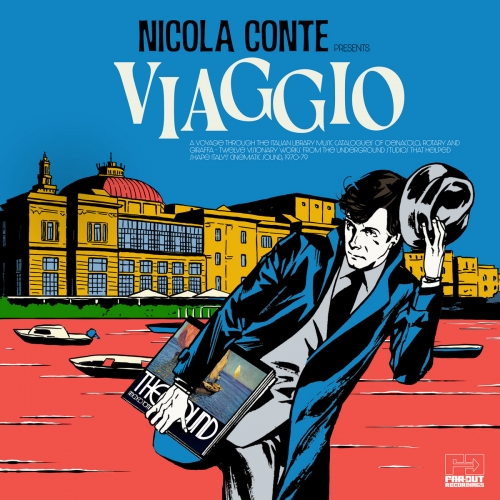Maria Zadori, Paul Esswood - Handel: Duets & Cantatas (1984)

Artist: Maria Zadori, Paul Esswood
Title: Handel: Duets & Cantatas
Year Of Release: 1984
Label: Hungaroton
Genre: Classical
Quality: FLAC (image+.cue,log,scans)
Total Time: 01:35:40
Total Size: 484 Mb
WebSite: Album Preview
Tracklist: Title: Handel: Duets & Cantatas
Year Of Release: 1984
Label: Hungaroton
Genre: Classical
Quality: FLAC (image+.cue,log,scans)
Total Time: 01:35:40
Total Size: 484 Mb
WebSite: Album Preview
CD1
1-1 Fronda Leggiera E Mobile - Duet Hwv 186
1-2 Troppo Cruda, Troppo Fiera - Duet Hwv 198
1-3 A Mirarvi Lo Son Intento - Duet Hwv 178
1-4 No, Di Voi Non Vo' Fidarmi - Duet Hwv 189
1-5 Conservate, Raddoppiate - Duet Hwv 185
1-6 Mi Palpita Il Cor - Cantata Hwv 132c
CD2
2-1 Tanti Strali Al Sen Mi Schocchi - Duet Hwv 197
2-2 Se Tu Non Lasci Amore - Duet Hwv 193
2-3 Beato In Ver Chi Può - Duet Hwv 181
2-4 Langue, Geme, Sospira - Duet Hwv 188
2-5 Sono Liete, Fortunate - Duet Hwv 194
2-6 Ah! Che Pur Troppo E Vero - Cantata Hwv 77
Performers:
Mária Zádori (soprano)
Paul Esswood (countertenor)
Cseperke Falvay (cello)
Pál Németh (flute in 05)
Péter Ella (harpsichord)
These records offer seven of the duets Handel wrote about 1710 for Italian aristocratic parties (they are said to be influenced by Steffani), three much later duets of the 1740s presumably composed in England (why, one wonders?), and one cantata for each singer of which the date is not known. None of these items is available in the current catalogue, and most of them fell on my ears with delightful freshness. This really is lovely music. The duets are mostly in three short sections, the voices treated fugally in the quicker movements but with a lot of coloratura thrown in, and a quiet lyrical middle section in between. Love is the usual theme, treated metaphorically in the duet about yearning doves Langue, geme e sospira, lightly in No, di voi non vuo fidarmi in which a quarrel almost turns into comic opera, and ecstatically at the end of A miravi io son intento. The music sounds the more enchanting because the singing is so good. Maria Zadori floats her high notes with effortless clarity and her coloratura is thrillingly precise. At his best Paul Esswood is her equal in coloratura and beautifully expressive in the lyrical sections. His cantata has a nicely played flute obbligato; the soprano's cantata is perhaps less appealing, and one wonders why she chose one whose words ask for a male singer. There is admirable support from the cello and harpsichord, the latter balanced so that it makes a real contribution to the sound.
![Machito And His Afro-Cuban Orchestra - ¡Cha Cha Cha! (Remastered) (2009) [Hi-Res] Machito And His Afro-Cuban Orchestra - ¡Cha Cha Cha! (Remastered) (2009) [Hi-Res]](https://img.israbox.com/img/2025-11/25/mr9qn5awcuknul9ag7nec1kys.jpg)

![Sonny Rollins & The Modern Jazz Quartet - The Elastic Hour (Remastered) (2025) [Hi-Res] Sonny Rollins & The Modern Jazz Quartet - The Elastic Hour (Remastered) (2025) [Hi-Res]](https://www.dibpic.com/uploads/posts/2025-11/1764251154_sreh.jpg)





![Badawi - Dissociative Jazz (2025) [Hi-Res] Badawi - Dissociative Jazz (2025) [Hi-Res]](https://www.dibpic.com/uploads/posts/2025-11/1764340145_a1795265605_10.jpg)